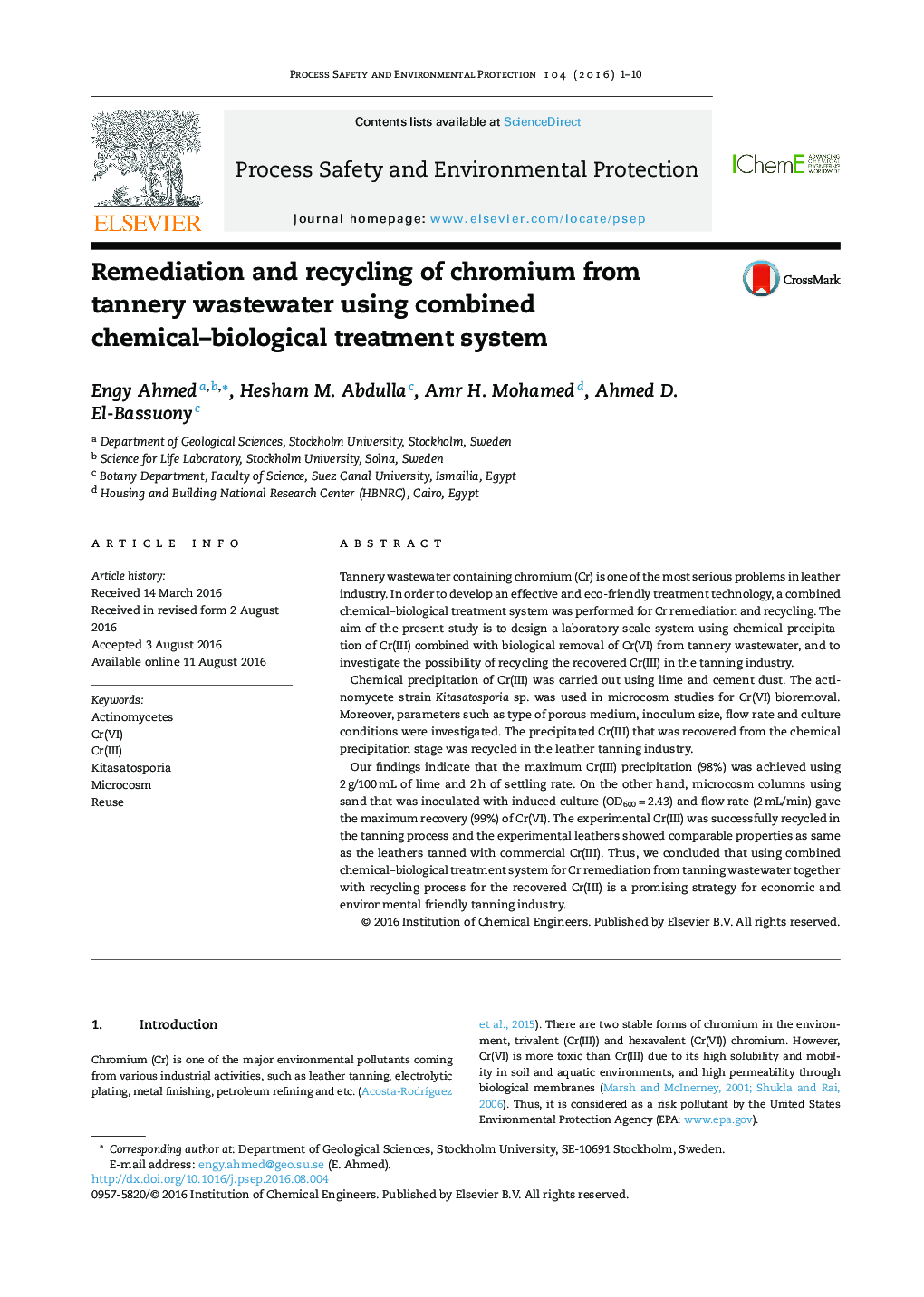| Article ID | Journal | Published Year | Pages | File Type |
|---|---|---|---|---|
| 4980923 | Process Safety and Environmental Protection | 2016 | 10 Pages |
Abstract
Our findings indicate that the maximum Cr(III) precipitation (98%) was achieved using 2Â g/100Â mL of lime and 2Â h of settling rate. On the other hand, microcosm columns using sand that was inoculated with induced culture (OD600Â =Â 2.43) and flow rate (2Â mL/min) gave the maximum recovery (99%) of Cr(VI). The experimental Cr(III) was successfully recycled in the tanning process and the experimental leathers showed comparable properties as same as the leathers tanned with commercial Cr(III). Thus, we concluded that using combined chemical-biological treatment system for Cr remediation from tanning wastewater together with recycling process for the recovered Cr(III) is a promising strategy for economic and environmental friendly tanning industry.
Related Topics
Physical Sciences and Engineering
Chemical Engineering
Chemical Health and Safety
Authors
Engy Ahmed, Hesham M. Abdulla, Amr H. Mohamed, Ahmed D. El-Bassuony,
